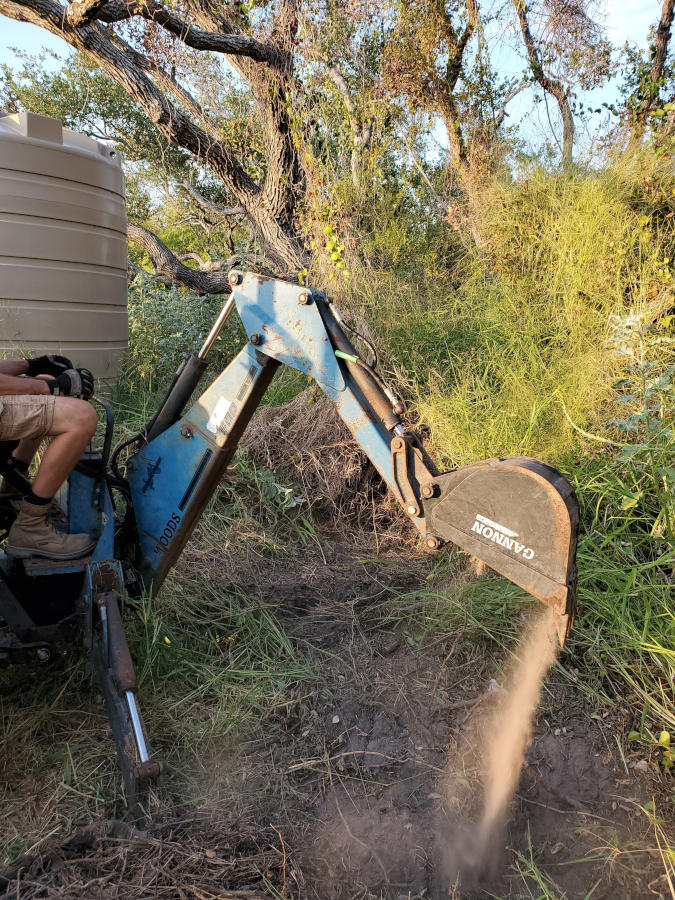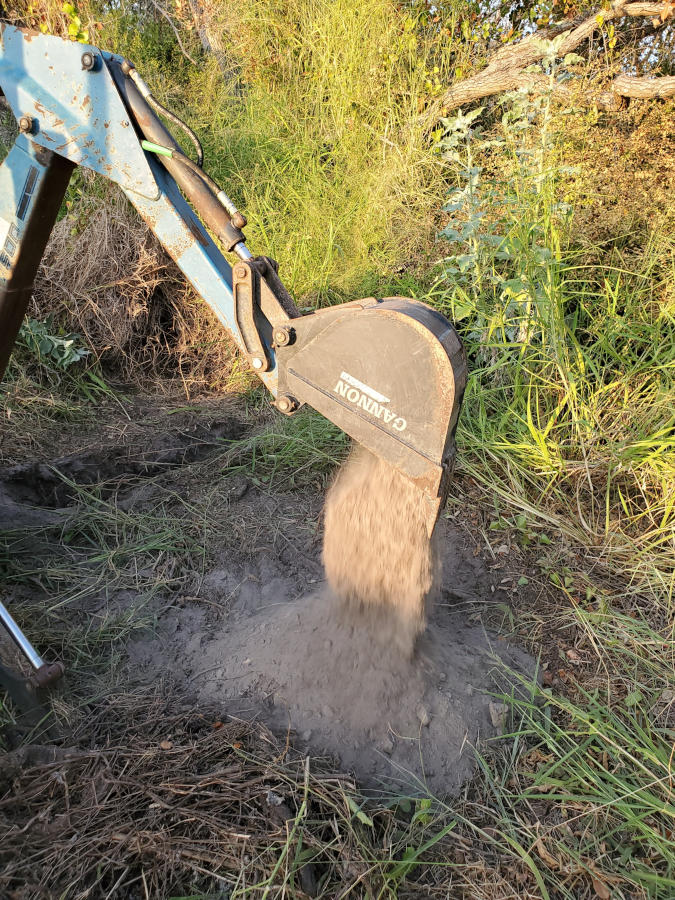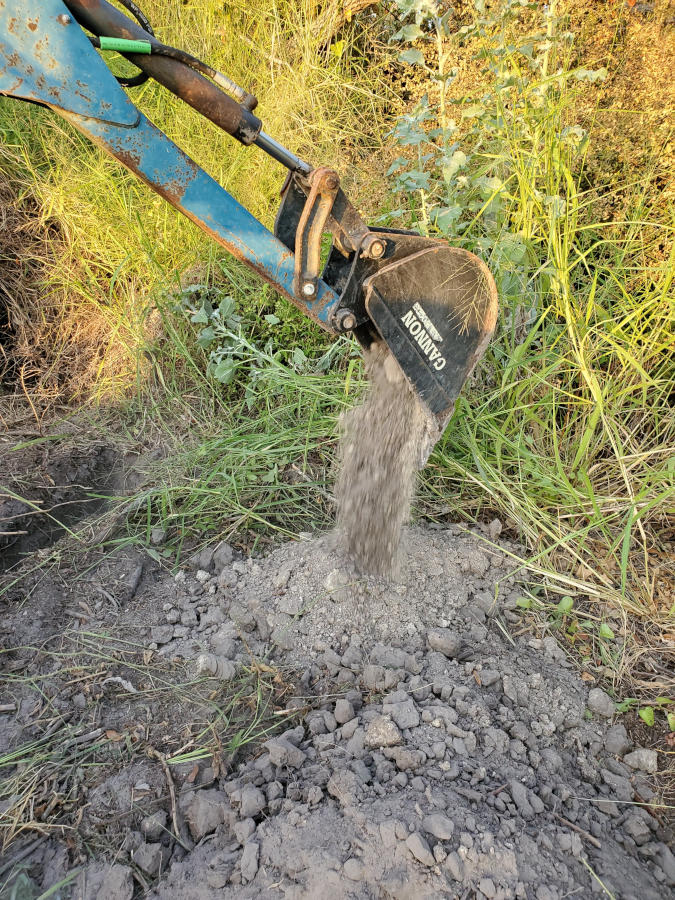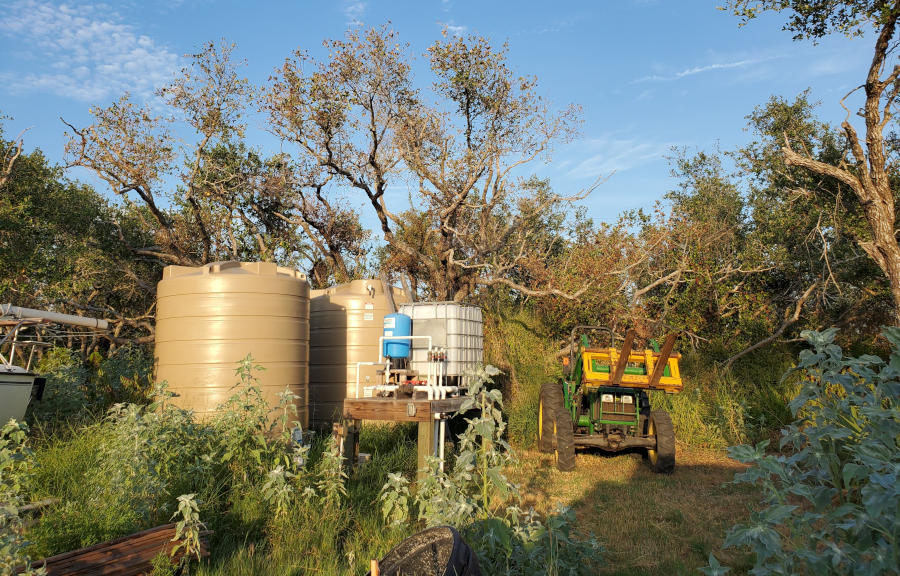
It’s Always About the Water
Two years since Harvey has past and the trees are taking yet another hit. After surviving the winds and the 25-30 inches of rain during Hurricane Harvey in 2017, then the 28 inches of rain in just a few days time during the summer of 2018, the trees may finally have meet their demise in 2019 due to the lack of rain. On average, the coastal bend receives about 30 inches of rain yearly with summer being dry. This year at almost three-quarters of the way through the year, we have received less than half of our normal rain allotment. Add the lack of rain along with the higher than average heat and the damaged trees are suffering once again.
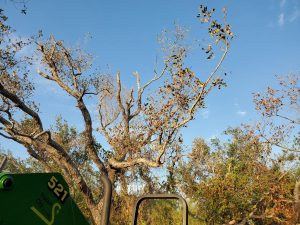
Having called the local Ag-Extension office, we have been informed it could be anything from lack of water, residual damage from Harvey, delayed shock from the excessive amounts of water two years in a row, to heat stress. But what is not, thankfully, oak wilt. Oak wilt is TERRIBLE and virtually untreatable. Caused by the spread of a fungus that disables the water system within the tree, it affects all types of oak trees at all stages of age. Oak wilt slowly kills the tree via dehydration. There are areas within the coastal bend that have experienced oak wilt but currently it is not locally. Yet.
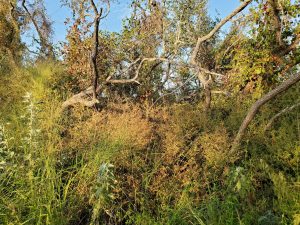
What is baffling is the areas of affected dying trees is also affecting the native under-story. Native brush that is almost impervious to drought conditions such as yaupon and American beauty berries. One clump of trees affected are the three large trees behind the water collection tanks. Some of the largest trees on the property, they were some of the hardest hit wind wind damage. The fourth tree in the clump perished with Harvey had taken the brunt of the wind and fell over onto the other trees. The remaining three trees have never rebound correctly and have always looked less full than others. Another clump of trees are small, wispy and young in age, maybe twenty years in age or so. Nevertheless, loosing trees is hard to accept when tress are so hard to come by.

By the middle of August, I could not stand by to watch the trees die any further. Water collected from the shower nightly had been spread amongst the trees. Each day a different tree received three to four gallons of water. However, with trees that are 36″ in diameter and 30′ tall, a few gallons once a week is not enough. In attempts to stave off any further dehydration issues and not having water to spare in the collection tanks, the Planner decided to dig a hole to determine the ground water level. If water was accessible, it could be collected and poured onto the trees. Something had to be done. Even the native plants were dying.
Scoop after scoop and each bucket full was just a dry as the last. Thirty minutes later and the dirt pouring out of the bucket was dry as dust. What is normally wet moist sticky blue clay was hard chalky clumps lacking the moisture to stick to my fingers let alone form a small ball. Close to four feet down in a hole and no water could be found. If Boxes in Fields cannot use mechanical advantage to dig a hole straight down into the earth’s core, then shallow rooted oak trees are at a loss.
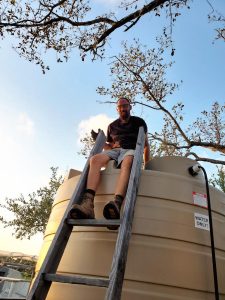
Another week gone by with not a drop of rain and the Planner was once again stressing the lack of living water. Monthly water level checks have become weekly. At three thousand gallons per tank and at our current daily usage, each tank only holds about three months of water supply. The one tank is within a few hundred gallons of empty. With the lack of rain, two to three gallons of water is collected from the nightly AC drip. This water is shared between the plants in buckets, the doggo, and the chickens. Bucket plants are watered enough water to stave off death but not enough to allow for blossoms. Birds and bees are gonna have to find food elsewhere. It is getting to be serious around here.
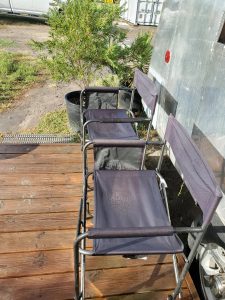
And then after another week of dry, hot, humid days it rains! Not a downpour and not by any means enough to fill the water collection tank or repair damaged trees, it was enough to settle the dust. Lasting less than 30 minutes and not raining more than an inch worth, it was beautiful. Chickens were clucking around happily, frogs were singing, and everything looked fresh and clean. Amazing.
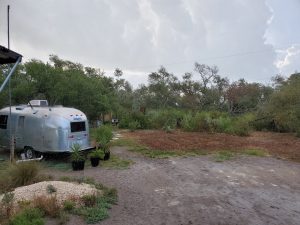
It was just enough water that it pooled in low spots such as chair seats but not enough to wash the road out. If the random rain shower had been anything more than what it was, it would have been a mess causing the dried out driveways to turn into sticky mud pits. But it didn’t. It was the perfect amount of rain for not having rained in over two months. Now if it could just do that once a week or so for the next two months and things would straighten themselves out. An inch of rain each week would be perfect. An inch of rain each week would end our stress at our lack of water once again. Not being connected to city water and not having access to unsalted ground well water can be stressful at times like this. Luckily for us, those times have been few and far between.
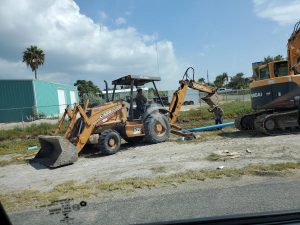
And wouldn’t you know, just two days after having rained, the city was seen installing a city water main at our cross street. City water less than 200 feet away. Almost three years to date since Boxes in Fields entered the Great Water Debacle at having discovered our little piece of land lack drinkable well water and city water was a more than the cost of the land itself, it looked like we might finally be able to secure a city line tap. Of course, a city tap would come at a cost outside our current budget. But it is nice to know, that if in the future if needed, we can obtain a city tap. Having lived on collected water for close to three years, I can honestly say, I enjoy our system much more than the chemically laid city water. Now, if we just get it to rain one inch a week. Not being greedy, just one inch a week for the next few weeks to two months. That would be perfect.
